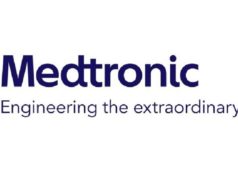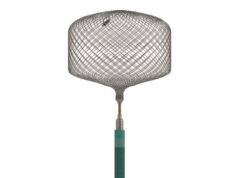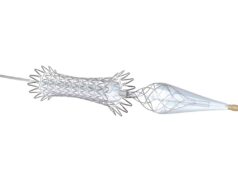This advertorial is sponsored by Medtronic.

As a prospective, independently adjudicated registry boasting a highly comprehensive patient dataset, INSPIRE-A is a “very unique” phenomenon in the field of endovascular aneurysm care—and one that may be able to provide answers for a number of research questions within this space. Jens Fiehler (University Medical Center Hamburg-Eppendorf, Hamburg, Germany) recently sat down with NeuroNews to elaborate on the registry’s strengths and outline some of the data it has produced to date.
Having currently enrolled over 1,400 patients from more than 40 sites across many European countries, as well as China, Australia, Israel, South Africa, and the United Arab Emirates (UAE), INSPIRE-A is both high-volume and global in its nature.
Sponsored by Medtronic—and endorsed by the European Society of Minimally Invasive Neurological Therapy (ESMINT)—the registry is continuously monitoring results in intracranial aneurysm patients treated with Medtronic neurovascular medical devices. These include the Flex, Shield and Vantage flow diverters, all of which belong to the PipelineTM embolisation device family, as well as the Artisse intrasaccular system (all Medtronic).
Homing in on what makes INSPIRE-A such a potent tool for evaluating these devices, Fiehler highlights the fact that site data from the registry are monitored externally—information on safety outcomes is assessed by a clinical events committee, while efficacy is evaluated by an imaging core laboratory led by Fiehler himself in Hamburg.
“So, it is not self-adjudicated by multiple interventionists, but by external entities,” he states, “and I think that is very unique; it is a lot of effort, but it is worth the effort, because the data are much more precise [compared to with self-adjudication]. There is plenty of evidence in the literature on how nice interventionists are to themselves.”
Fiehler believes that last point is an important one; presenting initial findings from INSPIRE-A at the most recent LINNC Paris Course (5–7 June 2023, Paris, France), he drew attention to the potential influence of operator bias on clinical outcomes, and highlighted the fact that self-adjudicated aneurysm occlusion rates have been observed to be roughly 25% lower after undergoing centralised analyses at an external core laboratory.
The core laboratory being utilised within INSPIRE-A, known as Eppdata, is run by Fiehler and his colleagues, having been spun out of the University of Hamburg in 2015 with the primary purpose of producing analyses with the highest levels of accuracy and precision possible. Today, the laboratory receives imaging data from every continent—apart from Antarctica, Fiehler concedes—and more than 200 hospitals worldwide. He also notes that Eppdata and Medtronic joined forces several years ago in what has proved to be a “very fruitful” partnership.
A new standard?
The “beauty”, as Fiehler describes it, of processing such a wealth of imaging data in a “highly standardised fashion” at the same core laboratory—as seen in INSPIRE-A—is that it enables in-depth comparisons of different devices and their specific characteristics.
“When the new [Pipeline] Vantage came around, there were some observations suggesting that the braid was not completely stable—and Medtronic pushed us very hard to go through all of the Vantage cases again, look at the braid stability, and compare it with the Pipeline Shield and Pipeline Flex cases,” he says. “Because we did everything in a standardised way, we were able to directly compare the [changes in braid structure], and we have actually come up with a new scale for braid deformations as a result.”
The scale Fiehler refers to here is part of a new white paper currently being worked on, and offers recommended radiological evaluation criteria for future trials assessing flow diverters in aneurysm therapy as well as a common terminology for industry. According to Fiehler, they propose a standardised methodology for imaging outcomes, including how and when to report them. Braid structure-related changes termed fish-mouthing, foreshortening, braid-hump deformation, and braid collapse, form the basis for these new standards.
The key aim of these standards is to aid comparisons between different brands and generations of flow diverters, offering more universal analyses and potentially even informing device development further down the line. They boast “good inter-rater reliability”, Fiehler says, but are also “realistic” in how they are applied.
“The previous scores that we are all aware of are almost all on aneurysm occlusion, but nobody has really covered the stability of the braid—this just did not exist,” he continues. “So, it was a great effort by a group of interventionists who [performed] a meta-analysis of the literature on the subject, and this new scale has been used to assess all of the flow diverters in INSPIRE-A.”
Fish-mouthing and stenosis
Initially, Fiehler notes that the typical neurological endpoints of interest in aneurysm care—primarily death, stroke and disability status—were all “extremely similar” across the 425 patients treated with Pipeline Vantage, and a comparator group treated with Pipeline Shield, in INSPIRE-A. He relays a 0.7% rate of neurological death and a 1.4% rate of major stroke with Vantage, adding that there were no statistically significant differences between these and the equivalent figures within the Shield cohort.
When asked to outline some of the more intriguing talking points revealed by his team’s newly devised imaging scale, Fiehler states that—in line with the braid-stability observations mentioned earlier—a higher rate of distal fish-mouthing, whereby the focal end of the flow diverter converges to form a cone shape, was seen with Vantage as compared to both Shield and Flex. These observations were made among a cohort of 103 patients treated with Vantage for whom follow-up digital subtraction angiography (DSA) imaging data were available at one year.
However, he goes on to describe this as a “transient phenomenon”, as well as a moderate one, having only been detected in the first six months post-implantation, with Vantage braid structures returning to normal in approximately half of the cases after 12 months. As such, this observation was an “interesting, but not very alarming” one.
“And, it had no relation to clinical symptoms whatsoever,” Fiehler posits. “We observed it; it was clearly there and can be reproduced, but there was no increase in the rate of clinical events like stroke or haemorrhage. And it is very reassuring that we did a secondary deep-dive into the data, and we saw something—it was definitely there, no question about that—but, at the same time, it has no clinical consequences, as far as we know.”
[INSPIRE-A] is not self-adjudicated by multiple interventionists, but by external entities, and I think that is very unique; it is a lot of effort, but it is worth the effort, because the data are much more precise.
While Fiehler notes that, strictly speaking, “we cannot rule out” that fish-mouthing in flow diverters may cause clinical problems in certain instances, INSPIRE-A found that the overall number of complications remained the same with Vantage versus the other devices being assessed. If clinical consequences do exist, he says, they are “very subtle”, and were not visible throughout this “very large number of patients”.
“I really have to applaud Medtronic for pushing us to work hard to find something,” he continues. “They wanted us to be very critical in terms of what we saw, and there was no attempt whatsoever to say, ‘okay, maybe it is not so bad’—nothing like that. If anything, it was the other way around, and it was really [positive] experience, to be honest.”
Other observations Fiehler highlights from INSPIRE-A include an improved complete aneurysm occlusion rate of 80.6% with Vantage compared to 74.7% with Shield. In addition, he points to an increased rate of 25–50% parent artery stenosis with the Vantage technology (8.7%), noting that this proved to be higher than those seen in patients treated with either Shield (5.4%) or Flex as part of the registry. However, he goes on to state that these stenosis rates—much like the distal fish-mouthing phenomenon—did not link to any clinical concerns, further averring that a great deal of variability in the rate of stenoses is not uncommon among newer-generation flow diverters available on the market.
“I think INSPIRE-A, and INSPIRE-S, are hugely valuable datasets, because they are very nicely curated by data managers and independent adjudicators,” Fiehler offers by way of a closing remark, also noting that such large repositories may even lend themselves to research involving artificial intelligence applications, and the training of machine-learning models, as well as pretreatment planning and more individualised treatment approaches, in the future.
DISCLAIMER: The data and content included in this presentation express only the clinical perspective of the presenter. They are completely independent and do not necessarily reflect the opinions of Medtronic.









